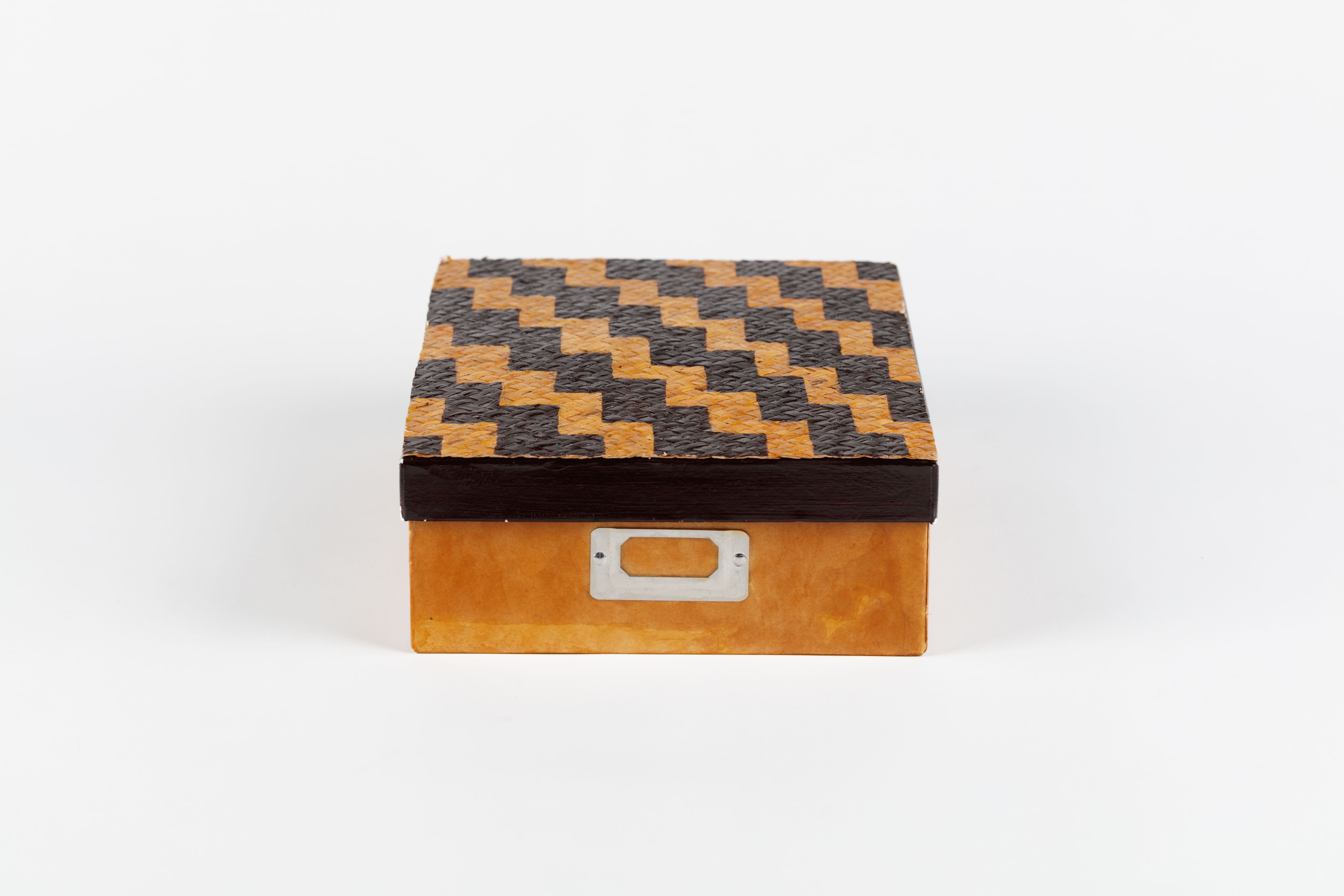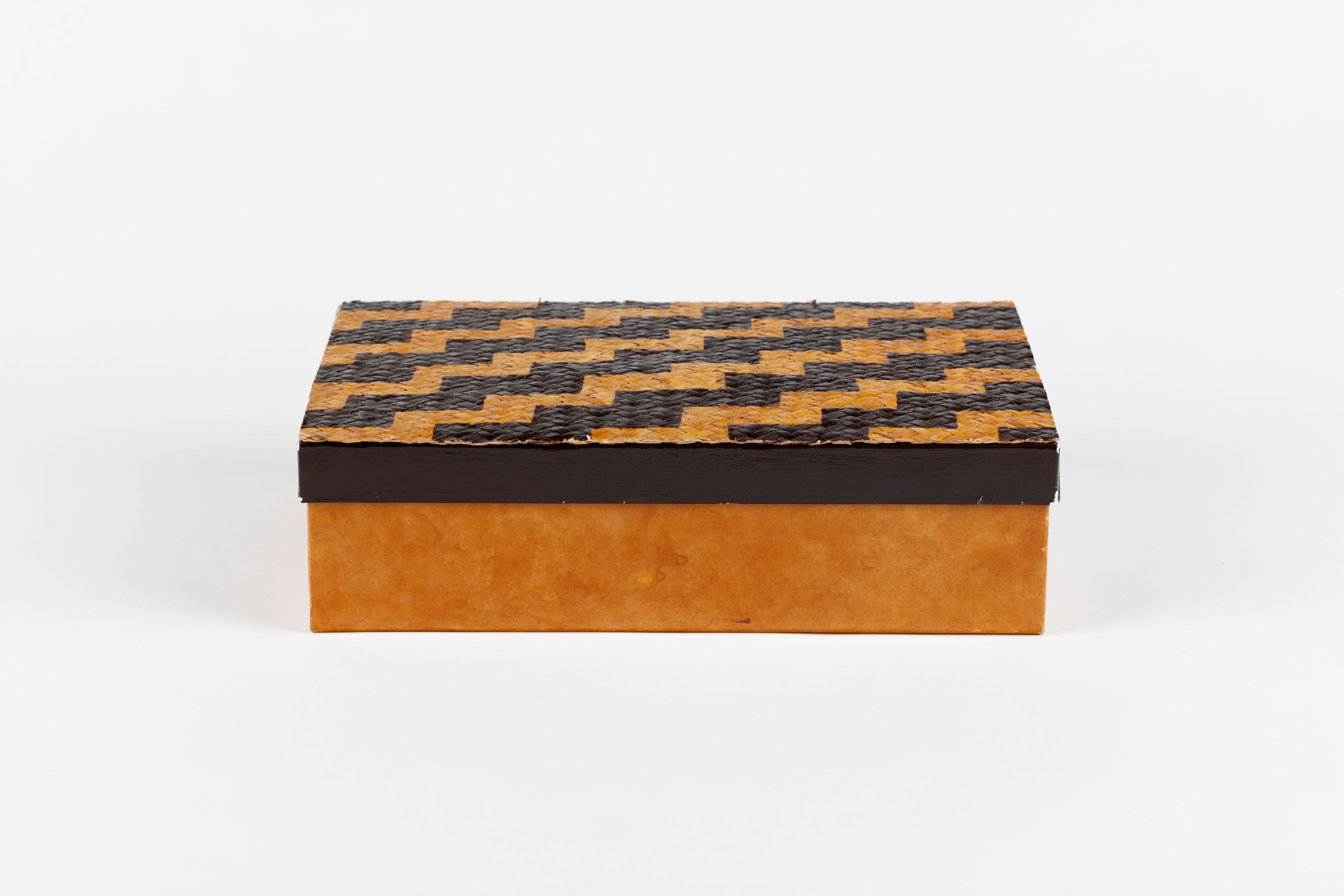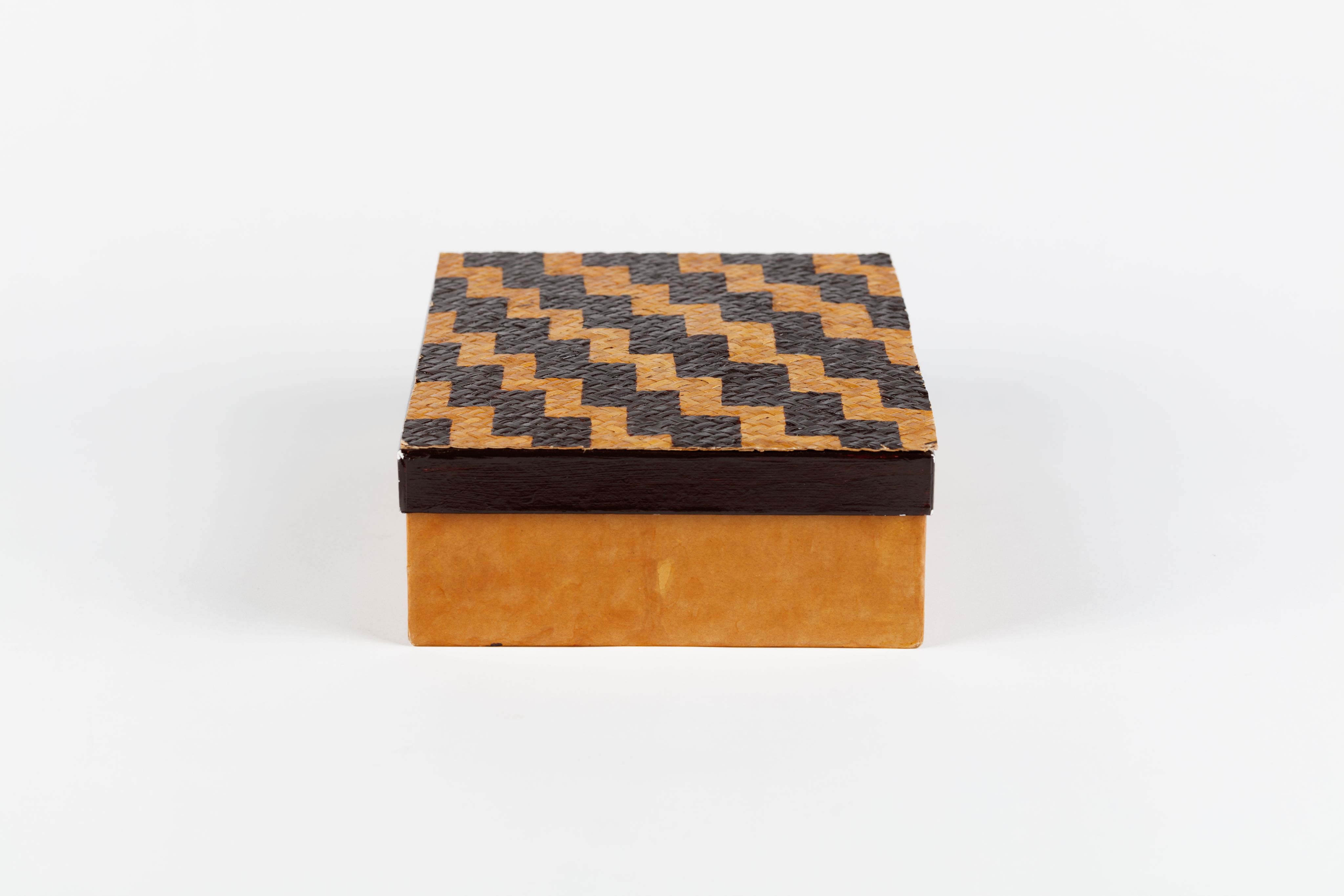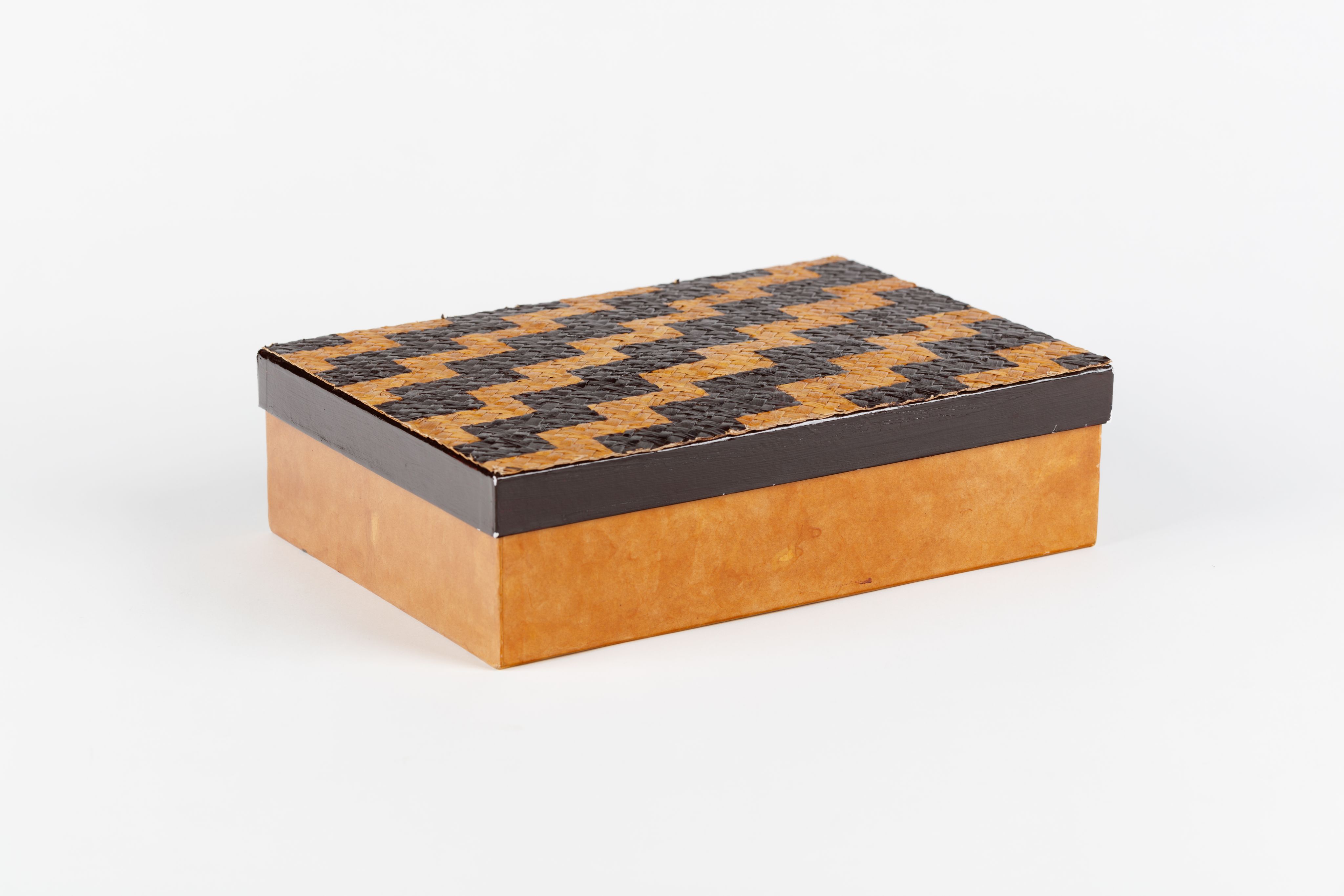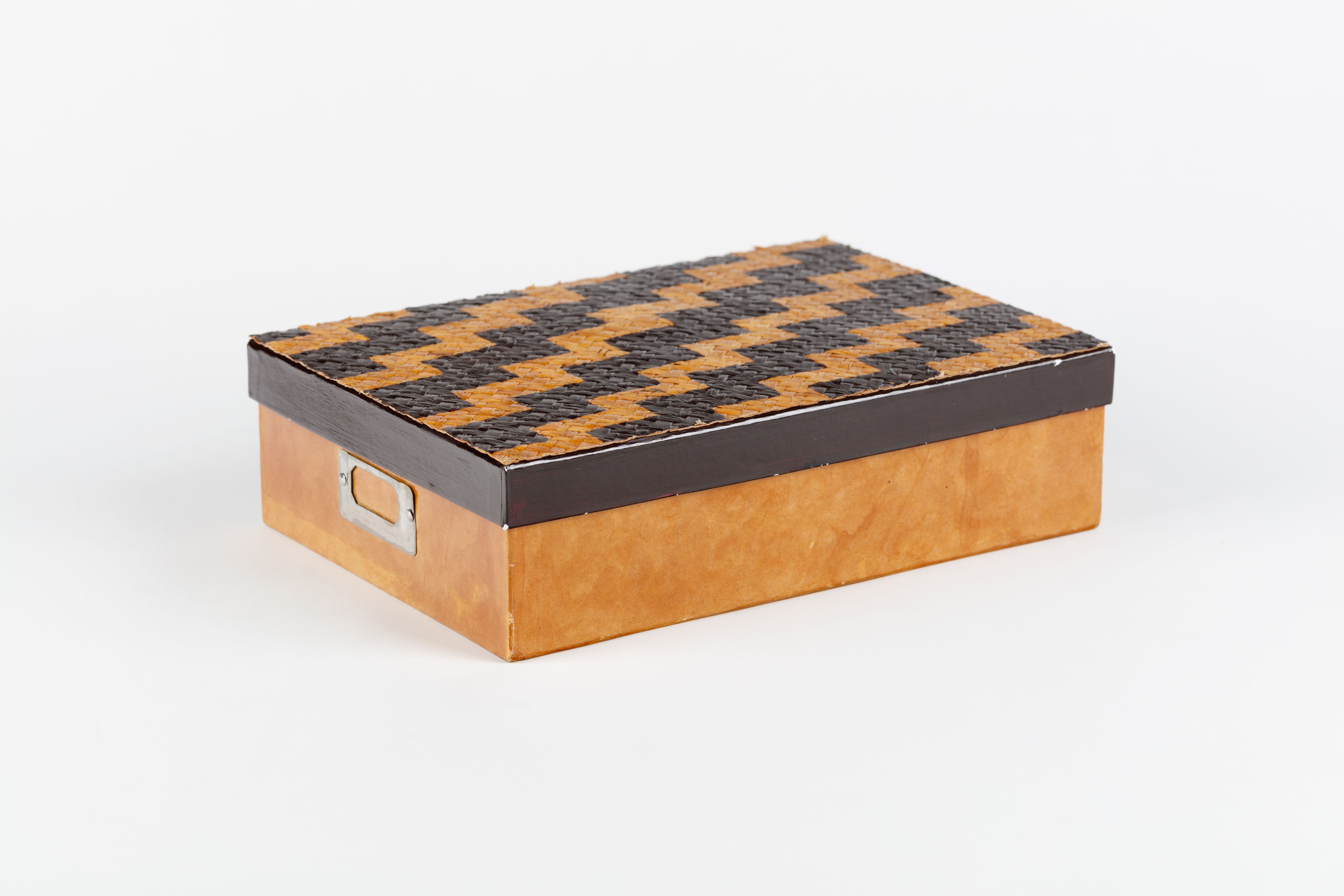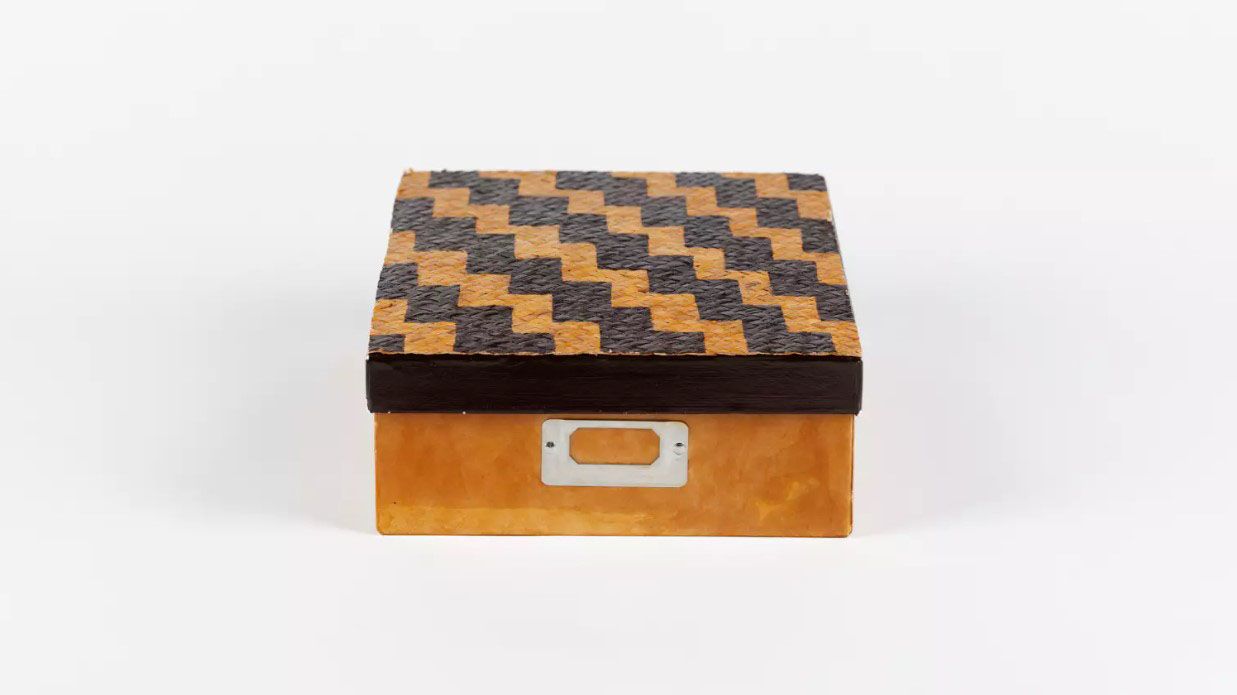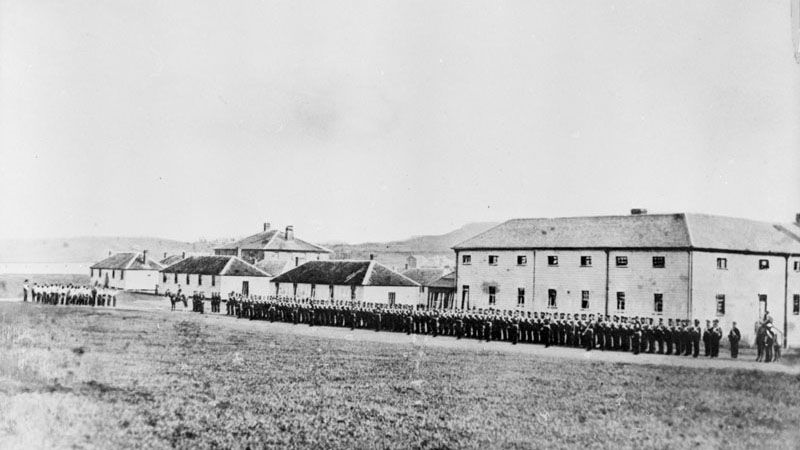New Zealand Wars Petition Box
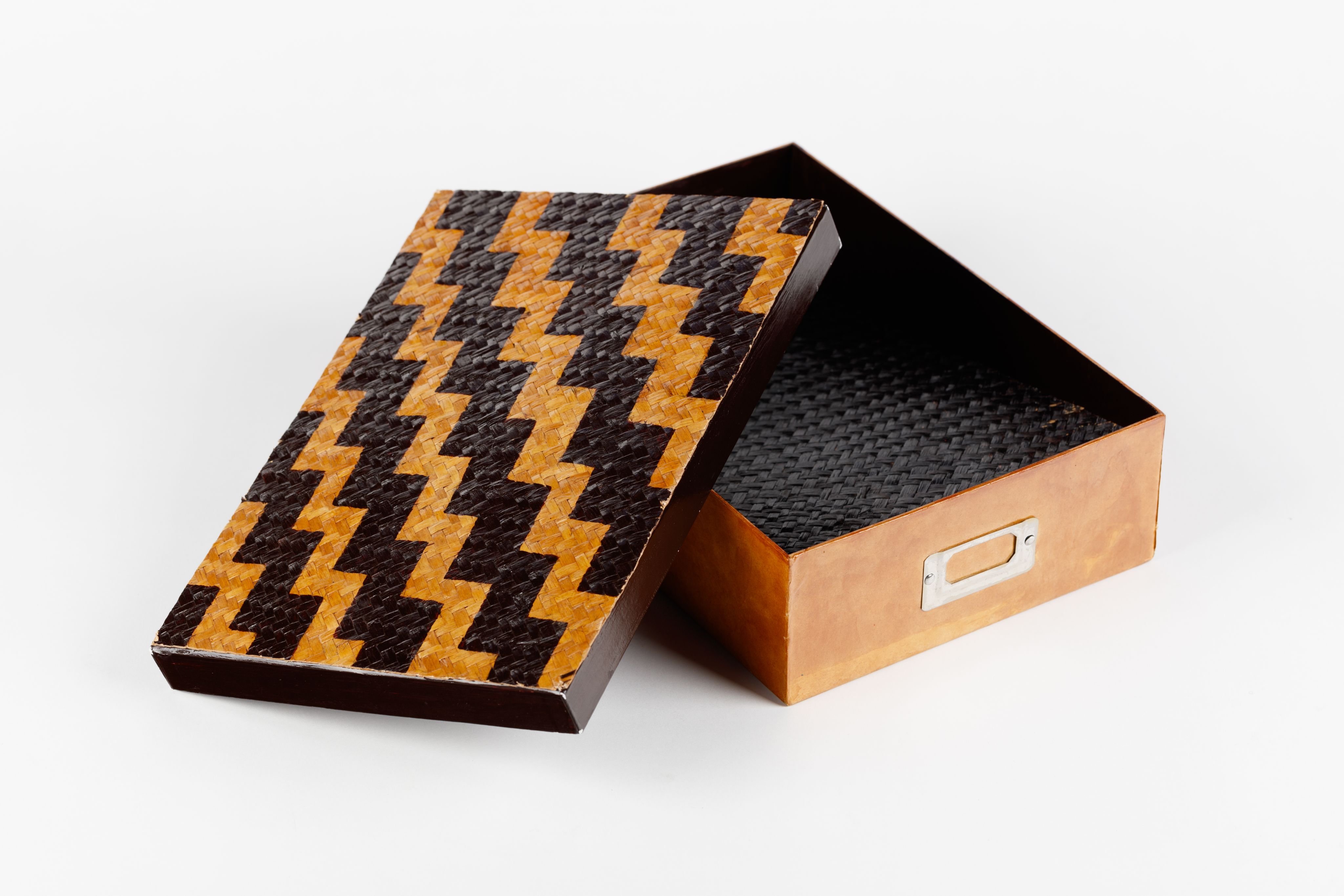
Introduction
This small, humble box is a powerful object in Aotearoa New Zealand’s history. It is one of four pouaka petihana (petition boxes) created to hold more than 12,000 signatures in support of a petition for a national day of commemoration for the New Zealand Land Wars. The petition was launched by Ōtorohanga College students Waimārama Anderson and Leah Bell in 2014, after attending a school trip to sites of significance in the New Zealand Wars and hearing kaumātua recount stories about what had happened in their local community during the wars. Reflecting on this experience in our conversation at Tāmaki Paenga Hira Auckland Museum in 2023, Leah said she thought at the time, “Why aren’t we learning about this? It is so important and it’s right on our back door. So many of the students at our kura were descendants of people who had either fought at Ōrākau or escaped from Rangiaowhia and it felt far more relevant to us than what we were learning in our social studies class”. With the support and encouragement of fellow students and staff, family members, kaumātua, and wider members of the community, Leah and Waimārama spent almost two years travelling around the motu (country) gathering signatures for the petition.
Three of the four petition boxes were created by Ōtorohanga College art student Kiana Ormsby, who was 15 years old at the time. Created using simple materials purchased from the local $2 store, Kiana attached a whāriki (woven mat) to the lid of a cardboard box and decorated it with a traditional stepped poutama pattern, which symbolizes the pursuit of knowledge and education. “We can’t move forward without knowing our history”, explains Kiana. “It speaks to the past, present and future”. A fourth wooden box in the shape of a book was decorated by Kiana’s father, artist Daniel Ormsby.
In late 2015, the petition papers were formally presented to Parliament in the boxes. In response to this collective effort, the government introduced an annual day of commemoration for the New Zealand Wars, known as He Rā Maumahara, in 2018. This was followed by the launch of the Aotearoa New Zealand History Curriculum in schools in 2023.
This simple box, created in a classroom, reflects a remarkable moment of collective action led by school students in Ōtorohanga. The petition highlighted the pressing need for New Zealanders to know their local histories, particularly those relating to the New Zealand Wars, which have had multi-generational and ongoing consequences, but which have been little understood by most New Zealanders.
Text by Lucy Mackintosh
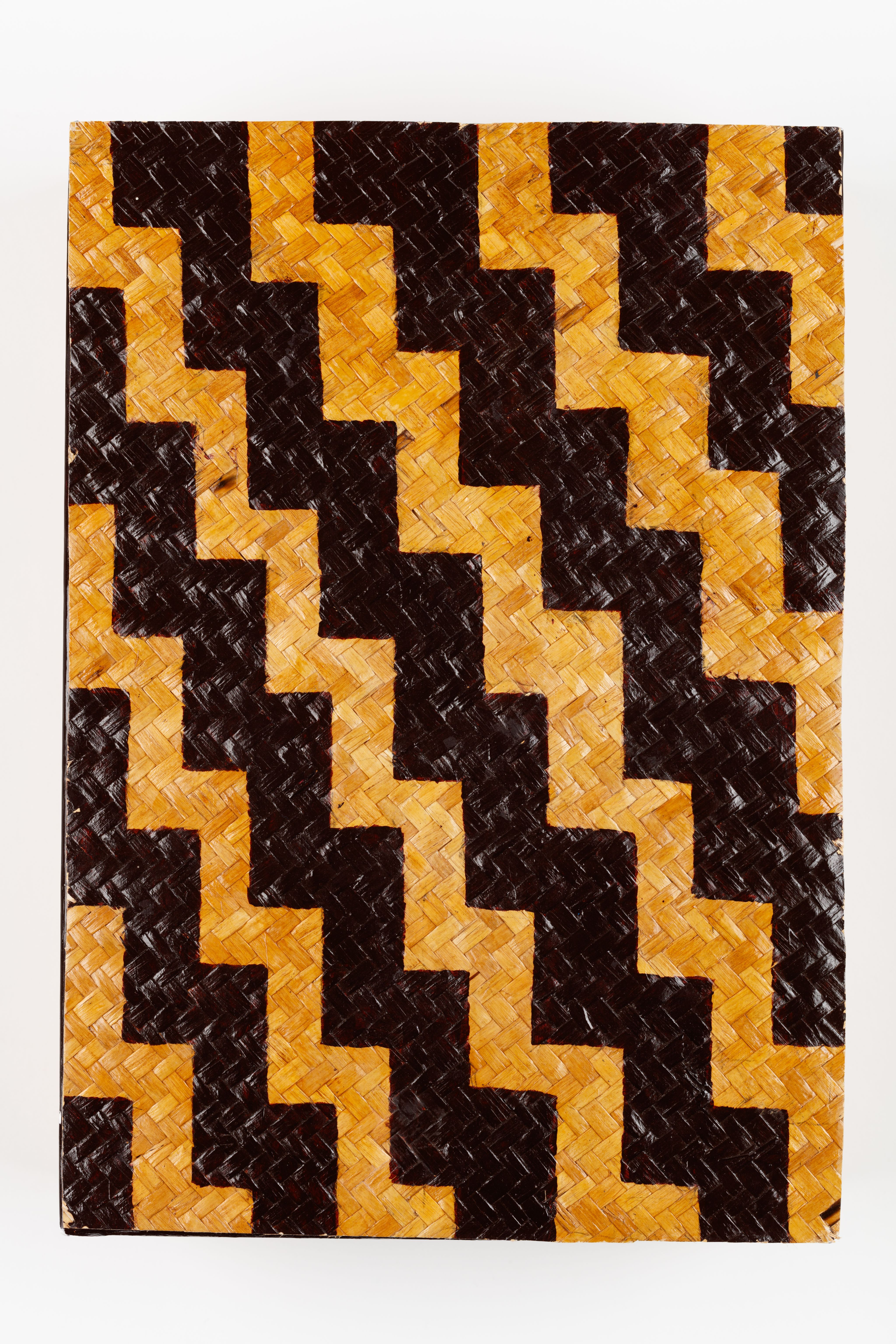
3d Scans
To start: press the play button. Move around: Left click + drag or One finger drag (touch). Zoom: Double click on model or scroll anywhere or Pinch (touch). Pan: Right click + drag or Two fingers drag (touch).
To start: press the play button. Move around: Left click + drag or One finger drag (touch). Zoom: Double click on model or scroll anywhere or Pinch (touch). Pan: Right click + drag or Two fingers drag (touch).
Images
Videos
Former Ōtorohanga College students Leah Bell and Kiana Ormsby discuss their experiences leading the petition with Linda Campbell (former teacher at Ōtorohanga College) and Lucy Mackintosh (Senior Research Fellow, Auckland Museum).
Auckland Museum staff Lucy Mackintosh, Kahutoi Te Kanawa (Curator, Pou Arahi), Nigel Borell (Curator, Taonga Māori), Gabriel Tongaawhikau (Learning Specialist & Pou Tikanga) and Tangimai Fitzgerald (Learning Manager) discuss the significance of the petition box pouaka petihana.
Glossary
Video 1 - Kiana and Leah
|
Kupu Māori |
Translation |
|---|---|
|
Kura Kaupapa Māori |
a school where the teaching and learning is in te reo Māori underpinned by Māori culture, value and principles. |
|
whānau |
extended family |
|
Poutama |
stepped pattern of tukutuku that symbolises geneaologies and various levels of learning and intellectual achievement. |
|
whāriki |
a woven mat |
|
tamariki |
to be young, children |
|
marae |
is a physical complex that is fenced with different buildings, it is a place of belonging for families, for sub tribes for a tribe of people. |
|
Wharenui |
is the main building of the marae that brings people together for meetings, can accomodate people. |
|
kōrero |
a conversation, discussion |
|
whānau |
family group, extended family |
|
kaumātua |
is an elder |
|
kia ora |
a positive greeting of good health |
|
wero |
a traditional Māori challenge. |
Video 2- Museum Staff
|
Kupu Māori |
Translation |
|---|---|
|
Poutama |
stepped pattern of tukutuku that symbolises geneaologies and various levels of learning and intellectual achievement. |
|
Pouhine |
a weaving pattern |
|
wāhine |
female, woman, feminine |
|
pūrākau |
myth, ancient legends, story |
|
Tāne/Tāne Mahuta |
husband, male, man/god of the forest |
|
Tāwhaki |
a semi super natural being of lightening and thunder |
|
Rangi Tūhāhā |
separately spaced heavens |
|
mātauranga |
knowledge, wisdom, understanding, skill |
|
whakapapa |
geneaology |
|
Ōrākau |
war battle site in Ngāti Maniapoto |
|
Rangiaowhia |
a site east of Te Awamutu, in the Waikato region of the North Island. |
|
Otorohonga |
a north king country town in the Waikato region of the North Island. |
|
tūrangawaewae |
standing place where someone has the right to stand, a place where someone has rights of residence and where someone belongs. |
|
mana whenua |
territorial rights, power from the land, authority over the land. |
|
iwi |
tribe, nation, |
|
tamariki |
to be young, children |
|
tuakiritanga |
identity, persoanlity |
|
tupuna/tipuna |
ancestor |
|
whāriki |
a woven mat |
|
mana |
power that can be transmitted or inherited |
|
kōrero |
a conversation, discussion |
|
tapu |
forbidden, sacred |
Object Information
Petition Box, for national day commemorating New Zealand Wars | Te Waka-Petihana
Collections Online : www.aucklandmuseum.com/discover/collections/record/850117
Related Objects
[Albert Military Barracks and 58th regiment Parade]
Collections Online: https://www.aucklandmuseum.com/discover/collections/record/1098021
Further Links
Harris, T. (2017, October 27). Nation changers. Auckland War Memorial Museum - Tāmaki Paenga Hira. Retrieved from https://www.aucklandmuseum.com/discover/stories/blog/2017/nation-changers
He Tohu. (2018, June 27). Interview with Leah Bell [Video with transcript]. National Library of New Zealand. Retrieved from https://natlib.govt.nz/he-tohu/korero/interview-with-leah-bell
Keenan, D. (2012, June 20). New Zealand Wars - Long-term impact. Te Ara - The Encyclopedia of New Zealand. Retrieved from http://www.TeAra.govt.nz/en/photograph/47765/he-ra-maumahara-a-day-of-remembering
O'Malley, V. (2019, May 19). What caused the New Zealand Wars? E-Tangata. Retrieved from https://e-tangata.co.nz/history/what-caused-the-new-zealand-wars/
O'Malley, V. (2019). The New Zealand Wars | Ngā Pakanga o Aotearoa. Bridget Williams Books. https://nzhistorycollection.bwb.co.nz/collection-books/9781988587011
Radio New Zealand. (n.d.). The NZ Wars Collection. Retrieved from https://www.rnz.co.nz/nzwars
Te Puna Mātauranga o Aotearoa National Library of New Zealand, Services to Schools Staff. (n.d.). Images relating to the New Zealand Wars. Digital New Zealand. Retrieved from https://digitalnz.org/stories/5d24041bfb002c625d9dc3f2
Te Puni Kōkiri. (2017, July 10). The impact of wars and conflicts in Aotearoa – New Zealand [Video]. YouTube. Retrieved from https://www.youtube.com/watch?v=0q_3kU5aRhk
Further Reading
Belich, J. (2015). The New Zealand Wars and the Victorian Interpretation of Racial Conflict. Auckland University Press.
